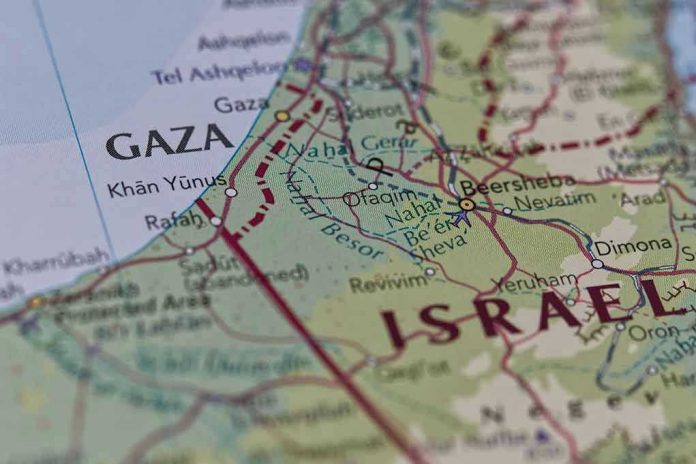
Israel’s deadly airstrike on Lebanon’s largest Palestinian refugee camp threatens to shatter the fragile US-brokered ceasefire and exposes how terrorist groups exploit vulnerable populations while America’s allies face relentless security threats.
Story Highlights
- Israeli airstrike kills 13 in Ain al-Hilweh refugee camp, deadliest Lebanese strike since 2024 ceasefire
- Israel claims precision targeting of Hamas training center; Hamas denies military presence
- Strike threatens US-brokered Israel-Hezbollah ceasefire and regional stability
- Palestinian refugee camp serves as flashpoint for proxy conflicts since 1948
Israeli Forces Target Alleged Hamas Operations
Israeli Defense Forces conducted precision strikes on November 18, 2025, targeting what military officials described as a Hamas training facility within the Ain al-Hilweh Palestinian refugee camp.
The operation involved multiple missile strikes following an initial drone attack on a vehicle near the Khalid bin Al-Walid Mosque. Israeli military sources justified the action as necessary counter-terrorism measures, citing intelligence indicating the facility planned attacks against Israeli territory.
Disputed Claims Highlight Intelligence Challenges
Hamas officials vehemently denied Israeli assertions about operating training centers within the Lebanese refugee camp, creating conflicting narratives about the strike’s legitimacy.
The IDF maintained they used precision munitions, aerial observations, and additional intelligence sources to minimize civilian casualties while targeting confirmed terrorist infrastructure.
This intelligence dispute underscores the complex operational environment where terrorist organizations deliberately embed within civilian populations, making surgical strikes increasingly difficult.
Strategic Implications for Regional Stability
The Ain al-Hilweh strike represents the deadliest Israeli action in Lebanon since the US-brokered ceasefire with Hezbollah in 2024, raising concerns about escalatory dynamics.
Security analysts warn the operation could undermine the fragile peace agreement and potentially provoke retaliation from Hezbollah or other Iranian-backed proxies. The timing particularly concerns American foreign policy experts who invested significant diplomatic capital in establishing the ceasefire framework.
Historical Context Reveals Ongoing Security Dilemma
Established in 1948, Ain al-Hilweh has repeatedly served as a flashpoint for regional conflicts, housing Palestinian factions that operate with limited Lebanese government oversight. The camp’s history includes previous Israeli strikes, most recently in October 2024 targeting al-Aqsa Martyrs Brigade operatives, demonstrating Israel’s persistent security concerns about cross-border terrorist activities.
Lebanese authorities disarmed the camp following the 2024 ceasefire agreement, yet Israel maintains that Hamas and other groups continue exploiting the vulnerable refugee population for military purposes.
Sources:
2025 Sidon airstrike – Wikipedia
Israeli military strikes in Lebanon, Gaza kill dozens of people – CBS News







